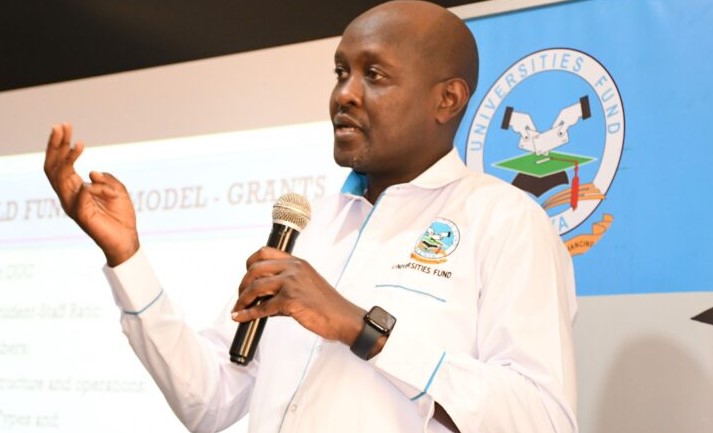The government has allocated Kes 19.6 billion to fund the new cohort of students joining universities and Technical and Vocational Education and Training institutions in the new funding model.
One hundred thirty thousand four hundred eighty-five students in public universities, while 9,662 students placed in private universities will receive loans from the University Fund out of 140,107 placed in universities.
University Fund Chief Executive Officer (CEO) Geoffrey Monari stated that in the 2023/2024 financial year, the budget estimation exceeds the number of students placed under the centralized system by the Kenya Universities and College Placement Board (KUCCPS).
“There is no student who will miss funding. You can see the number of students we estimated is higher than those who were placed. All students will be funded regardless of their status,” he said.
Universities will get a budget of Sh 34.1 billion for funding under the differentiated unit cost (DUC) model, which distributes cash to institutions based on the number of undergraduate students enrolled in the regular course.
Did you read this?
Candidates for the 2022 KCSE who wish to apply for university loans and scholarships have already started the application process.
They must now adhere to new rules established by the Ministry of Education by the deadline of August 27.
Only KCSE 2022 applicants are subject to the funding model, and they must submit their applications through the Higher Education Financing (HEF) site at www.hef.co.ke.
“We shall not close until the 140,107 students get in, but we cannot force everyone to apply because I could have been placed and I am able I pay, it does not mean that the applications will be 100%.”
“Even from past records we have seen that some students opt not to apply but the position is we would want to accommodate every student because the funds are available,” Monari said.
On her part, KUCCPS CEO Mercy Wahome stated that degree program cost influenced the university application by students.
“The current status for applications is 6,155 and we are seeing an average of about 2000 and it’s growing every day. The new funding model will address the gap of underfunding in universities. The cost actually affected the behaviour of students in the way they applied for these courses,” Wahome said.
Students will be awarded scholarships, loans and bursaries based on a Means Testing Instrument (MTI) methodology that intends to determine their level of need.
The new funding model will disburse funds on the ratio encompassing 61 per cent of Government scholarships, 36 per cent of Government loans and 7 per cent of households.









